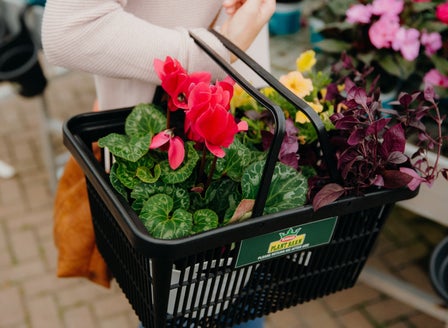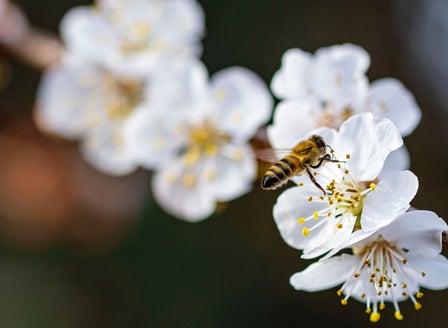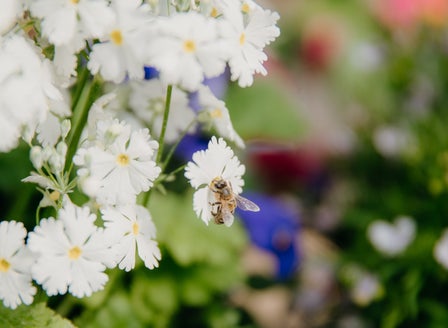Nicknamed the ‘winter rose’ due to its stunning, vibrant colours in the winter, hellebores will add a touch of colour to those dreary winter days in the garden. Hellebores provide food for bees and other insects in winter when food is scarce. Plus, they are perennials, so will continue to bloom for several years.
Planting Calendar
Hellebores are best planted in late autumn when they are available in store.
Prepare
Position
Hellebores prefer to be grown in full to partial shade and do well when planted under deciduous trees in fertile well drained soil.
Soil
When planted into the ground Hellebores like a free draining soil that is rich in organic matter. To improve the organic content in your soil, break up the soil and add Kings Compost and Kings Sheep Pellets then mix together well. When growing in containers, plant into Kings Container mix. This mix contains added water storage crystals and Saturaid, two products that help maintain moisture in the soil.
Plant
When planting into the ground, ensure the plants are watered well before planting. Gently tap the plant out of its pot. Dig a hole twice the depth and width of the plants root ball. Mix Kings Compost into your existing soil at a 50/50 ratio, add Sheep Pellets, then mix together well. Back fill the hole with this soil, so that when planted the top of the plant’s roots sit level with the surrounding ground. Firm the soil down gently and water in well with Aquaticus Organic Garden Booster. In heavier clay soils, where drainage is likely to be an issue, plant onto a raised mound and sprinkle Gypsum Clay Breaker into the bottom of the hole, this helps slowly condition the soil and will help to break down the clay. When planting into containers ensure that the plants are watered well before planting. Plant in Kings Containers mix, as this has water retention crystals in it, which will help in keeping the soil moist. Firm the soil down gently and water in well with Aquaticus Organic Garden Booster.
Care
Watering
Hellebores like to be kept moist, but the soil must be free draining. Water well in their growth periods in autumn and spring. Watering in summer is less important as they die back and become dormant.
Feeding
When planted in the ground liquid feed every month with Aquaticus Garden Booster, from Spring through to the end of Autumn, this encourages root growth and increases the microbial activity in the soil. Monthly applications of Kings Sheep Pellets will help with soil conditioning and plant health. If planted into a container, feed with Kings Liquid Fast Food along with monthly applications of Aquaticus Organic Garden Booster this encourages strong roots and a healthy immune system.
Mulching
Mulch around the base of the plants (make sure that the mulch does not come into direct contact with the stem of the plant) with Living Earth More than Mulch. Mulching helps to reduce weeds as well as aiding the soil to retain moisture.
Spraying
Aphids can be a problem, if needed spray with Aquaticus Bugtrol.
Pruning
Remove old leaves in autumn to allow the plant to show off its flowers and new growth.
Expert Tip
Hellebores tend to have downward-facing flowers, so to enjoy them to their full extent, plant them on a hill or a raised garden at eye level.
Tip
Old flower heads look great in a vase and last for weeks.
Top Varieties
White magic
White magic has pure white flowers with a green center, on long stems. Growing to 40 x 50cm.
Orientalis mixed
Orientalis mixed is a selection of various Hellebores that come in a range of flower shapes, that are either double or single. Flowers come in red, purple, shades of pink and yellow sometimes spotted or speckled. growing to 50 x 60cm
White tutu
Hellebore ‘White Tutu’ is pretty as a picture with gorgeous ruffled white double flowers speckled with dark mauve. Growing to 50 x 60cm
Anna's red
Annas red is stunning with its magenta red flowers and marbled green leaves. growing to 50 x 60cm
Frequently Asked Questions
When is the best time to plant hellebores?
Plant hellebores in autumn or early spring for best results, allowing them to establish before extreme temperatures.
How often should I water hellebores?
Hellebores like to be kept moist, but the soil must be free draining. Water well in their growth periods in autumn and spring. Watering in summer is less important as they die back and become dormant.
How do I propagate hellebores?
Hellebores can be propagated by dividing clumps in spring or autumn or by sowing seeds collected from mature plants.
When do hellebores typically bloom?
Hellebores typically bloom from late winter to early spring, with flowers lasting several months.
Are hellebores toxic to pets?
Hellebores are toxic to pets if ingested. Keep them out of reach of curious animals and educate children about the plant's toxicity.


